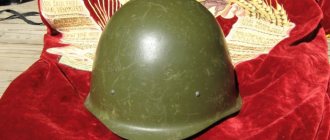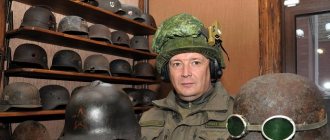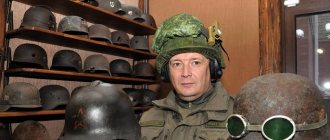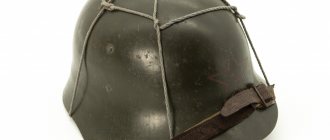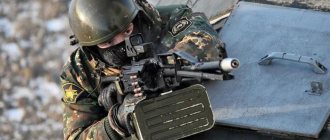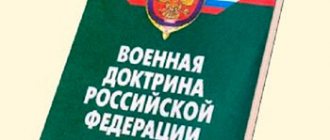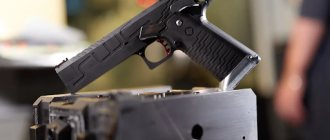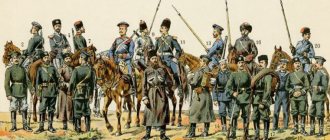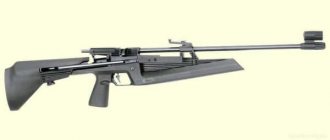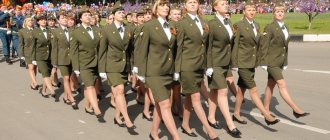Every man, especially those who served, will agree that military clothing is considered the key to the high combat effectiveness of military forces. In Russia, military uniforms always meet all the necessary requirements: they are reliable, comfortable and perform all their main functions. Today in Russia every soldier of the military forces is equipped with a military uniform. Still, uniforms are one of the important aspects of service.
Let's look at what military helmets are, when they began to be used, the first English, French and German military helmets.
How did the concept of “helmet” come about?
A special piece of clothing designed to protect a warrior’s head during battle was originally called a helmet. Since it was a continuation of the armor and was also made of iron, the military command included it in the standard combat kit under the official name “steel helmet” and recognized it as an effective means of individual protection for a fighter.
With the advent of various types of troops and the improvement of military craft, helmets began to be modernized. The products were dome-shaped. Steel was used to make them. But history knows examples made of felt and leather, the protective properties of which were ensured by a large number of metal elements attached to them. Due to the presence of these steel parts, the headdress was associated with iron. Over time, a more convenient word “casque” appeared in everyday life, which in Latin means “metal helmet.”
Overview of species
By type of use
It is customary to distinguish the following helmet options:
- winter heat-resistant;
- universal construction;
- miners (for underground work);
- firefighters (with increased fire and electrical resistance);
- heat-resistant structures;
- acid-resistant and alkali-resistant models;
- intended for other professions.
By color
The color of a safety helmet can vary greatly. And professionals have long come to the conclusion that such color marking allows for increased security. In addition, it will make it easier to identify personnel at long distances and in low visibility conditions. The state standard for the coloring of protective headgear, approved in 1987, has long been canceled. The following regulations do not say anything about specific colors.
And yet, for reasons of convenience, and partly for reasons of tradition, builders and other professionals adhere to established color schemes. White helmets are usually worn by the management of organizations and their structural divisions, as well as labor safety inspectors. Recently, they have also become an attribute of security services (security guards, watchmen, watchmen). And some construction organizations practice white helmets in the equipment of engineering personnel.
Red headdress is worn by foremen and engineering and technical personnel of industrial enterprises. In the industrial sphere, they are also used by chief mechanics and chief power engineers. Yellow and orange helmets can be used by ordinary and support personnel at various sites. However, there is another approach, according to which the color of protective headgear is distributed as follows:
- orange - surveyors;
- red - novice specialists and visitors;
- yellow - ordinary personnel (but not trainees);
- green - for electricians and electricians;
- black - mechanics;
- blue - plumber service specialists;
- brown - miners;
- blue - crane operator;
- white or red - fire departments.
By type of additional equipment
Some professions strongly require the use of special headgear with face protection. Helmets with a shield or a shield made of transparent materials provide reliable protection from splashing metal, drops of caustic liquid, flying chips, splinters and dust. To fasten such an element, a special part is used. There are also impact-resistant shields that can be made of transparent materials. Some models can protect against elevated temperatures.
Some helmets are equipped with a visor, maximizing the safety of the face in general and the eyes in particular. Such designs are useful for the logging industry, construction and installation work. Many industries actively use helmets with headphones. This addition allows you to both escape from incessant loud sounds and organize constant communication between employees.
Communication headphones for helmets:
- equipped with built-in electronics that suppress impulse noise;
- suitable for work in explosive environments;
- can transmit signals via Bluetooth;
- are designed to contain sounds of varying volumes and frequencies.
Some helmets come with (or are used in conjunction with) goggles. When work requiring the use of glasses is completed, they can be returned under the helmet in one motion. Pushing this protective device back is no more difficult.
Any helmet is equipped with a chin strap, without which it cannot be properly held on the head. The width of the strap cannot be less than 1 cm, its fastening can be on the body of the headgear or on a tape.
Quite often there are helmets with a liner, which is characterized by increased heat resistance. It compensates for the danger of increased temperature and thermal radiation. Such equipment is most often used by welders and metallurgists. There are also helmets with liners:
- for mechanical engineers;
- builders;
- miners;
- oil producers;
- oil refiners;
- electricians.
By appearance
Fields and visors significantly increase protection from light exposure. Lantern holders are also additionally used. It is worth considering the following options:
- equipped with a removable drape;
- adding a warm balaclava to protect against hypothermia;
- made from a combination of glass with textolite and plastic.
Construction of helmets
Wartime helmets have always been a subject for research by historians and archaeologists, who have thoroughly studied all the structural features and forms of soldier’s personal protective equipment, which have been widely used for thousands of years. Scientific research suggests that the main part of the protective helmet design has remained unchanged for many centuries. The changes affected only the form. It depended on the development of weapons and destructive weapons, from which it was obliged to protect.
Metal was used as a material for making helmets. These were thin sheets of bronze or copper, which were eventually replaced by steel or iron. It was helmets made of iron sheets that were used by all armies of the world until the 80s of the twentieth century. Later, military helmets and helmets began to be made from modern materials such as titanium, Kevlar, fabric polymers, and a compound of titanium and aluminum.
The internal structure of the helmet is represented by a special leather part, fastened with rivets around the circumference in the lower inner part of the product. This part of the helmet is called the “tuleyka”. It branches out using slits into several petals connected by a cord. The main functions performed by the crown and petals:
- ensuring a balanced fit of the helmet on the head;
- preventing head contact with the metal sheet of the helmet;
- softening the impact of fragments and stones on the outer part of the helmet.
Modern military helmets are more comfortable and safe for a soldier, since the petals contain additional foam or leather pads attached to them, enhancing the softness.
Review of GOST ISO 14116-2016. Fire-resistant fabrics and fire-resistant clothing
The document was put into effect by order of the Ministry of Industry and Trade of the Russian Federation dated December 26, 2016 No. 2075-st as a national standard of the Russian Federation from November 1, 2017.
Translators were also sweating over GOST, since the GOST in question is identical to ISO 14116:2008 “Protective clothing — Protection against heat and flame — Limited flame spread materials, material assemblies and clothing, IDT” (Protective clothing. Protection from heat and flame. Limited flame spread) .
GOST ISO 14116-2016 establishes requirements and methods for assessing the properties of materials, packages of materials, special protective clothing (working clothing) in terms of limiting the spread of flame.
Workwear manufactured in accordance with GOST ISO 14116-2016 is designed to protect workers from accidental short-term contact with a small flame in the absence of a significant risk from heat of another nature. If, in addition to protection from limited contact with flame, workers need protection from heat of a different nature, then clothing must additionally comply with the requirements of ISO 11612, Protective clothing - Clothing to protect against heat and flame (translators apparently have not yet translated this document).
GOST ISO 14116-2016 establishes technical requirements for workwear and materials for its manufacture during design, production and confirmation of conformity.
The appearance of combat helmets in France
Until the outbreak of the First World War, soldiers of European countries did without protective helmets. The army abandoned armor long ago, so a helmet protecting the head was considered an element of ancient armor that had no place in the modern army. However, the First World War, which was unofficially called the “trench war,” showed that abandoning soldiers’ helmets was a rash decision.
Since it was necessary to stick out of the trenches, the soldiers’ heads were the first to feel how bad they felt without reliable protection. Most soldier deaths occurred from hits to the head. Seeing the monstrous losses of personnel that occur in war every day, the generals of European countries became seriously worried.
The first special-purpose helmets were developed in France. Before their appearance, French soldiers wore cloth caps, which could only protect their heads from bad weather. The first French helmet was called “Adriana” and began to be mass-produced already in 1915. It was not one-piece and consisted of the following parts:
- Cap;
- Comb;
- Skirts.
Immediately after the appearance of helmets, the losses of the French army decreased significantly. For example, the total number of wounded decreased by 30%, and those killed by 12-13%. It is worth considering the important fact that the French helmet was not intended to protect against bullets. He, of course, could ricochet a bullet that hit him along a lateral trajectory, but he could not withstand a direct hit.
Seeing the unexpected success in “reanimating” such a seemingly outdated element of protection as a helmet, the allied countries hastened to purchase huge quantities of “Adrian” for their armies. The following countries have purchased such protection:
- Russia;
- Romania;
- Italy;
- Portugal;
- Great Britain.
All of the above countries, except England, were very pleased with the protective properties of French helmets.
Purpose
When choosing a product, it is important to consider the type of activity for which it is intended:
- electric installation work;
- construction of facilities;
- work at a height of more than 3 meters;
- installation, construction, transportation of objects in difficult temperature conditions;
- working with hot metals.
Since working at heights will require one model of safety helmet, and working with aggressive solutions will require a completely different one, you need to take this into account when purchasing. The first type will protect against strong impacts, the second - against chemical burns. This information is indicated in the description of each model.
English soldier helmets
The British military leadership, which purchased a large batch of French helmets, remained very dissatisfied with their protective qualities. A commission was created to develop their own helmet, which would be better than the French counterpart. It is possible that this decision was made because of the pride of the British military aristocracy, which considered it shameful to use helmets invented by the “frogmen” in war.
After reviewing several options, the British military command chose the design of John Brodie, who presented his own model of a helmet, very much reminiscent of the medieval English Capellin iron hat. English soldiers fought in such helmets in the 11th-16th centuries. After minor modifications, the helmet was adopted by the British army under the name "Helmet Steel Mk1".
Unlike the French model, the English helmet was one-piece and had wide edges along the entire perimeter. It was perfect for protection in a trench, as the wide fields protected against shrapnel and shrapnel from above. But every attack in it was very risky, because the helmet did not protect the back of the head, temples and ears at all. Since the British troops did not go on the attack too often, this helmet was not only liked by the British military, but was also adopted by several countries very friendly to Great Britain. These were:
- USA;
- Canada;
- Australia.
It is clear that these 3 countries, due to the fact that they practically did not participate in hostilities, had helmets only for “order.”
Ш 4
1 - bed; 2 - racks; 3 - guide pipe; 4 - drummer; 5 — trigger device; 6, 7 — time counter nodes; 8—test shield; 9—model of a human head according to GOST 12.4.128; 10—device for securing the shield
Crap. 2
Stand for testing the mechanical strength of shields
The mass of the striker required for testing in accordance with Appendix 2 is ensured by filling its cavity with shot (GOST 7837 or GOST 11964). Weight is checked by weighing on a scale.
The stand is calibrated in accordance with Appendix 3.
The firing pin drop height is checked using a ruler.
Ensure the horizontal position of the shield on the head model so that the points of impact of the striker are located inside a circle with a radius of 15 mm drawn from the center of the glass.
For a transparent, colorless body, the impact points must correspond to the area of projection of the eyes on the body of the shield, i.e., be at a distance S from the edge of the head mount (Fig. 2). Place stand 1 under the free end of the body (Fig. 4).
3.10.3. Testing
Impactor for testing mechanical strength Device for securing the shield during testing
scutes (side view)
1 and 2 - shells; 3 - shank; 4, 5— strikers
Crap. 3
Shields are tested using a hammer freely falling from a height of (1.3 + 0.005) m with a removable striker made of steel with a hardness of at least 350 HB in the shape of a hemisphere with a radius of (11 + 0.1) mm.
Note: When conducting perforation tests, a striker with a cone-shaped striker with a sharpening angle of (60 ± 1)° and a tip radius of (0.5 ± 0.1) mm is used (Fig. 3).
The striker with the striker in the form of a hemisphere is installed in the stand holder, after which it is allowed to fall freely onto the surface of the shield.
At a given value of the striker energy W, three impacts with the same energy are made on the body of the shield or on the glass. The shield is considered suitable if, after three blows, no cracks or chips are found on the shield body or sight glass, and the body or glass itself remains securely fastened.
Military helmets in Germany
When Germany's opponents had been using head protection for over a year, German soldiers continued to make do without it. Only in 1916 did the first German helmets appear, which were quite different from what the representatives of the Entente bloc wore. Most likely, the Germans were simply not satisfied with the design of the French and English helmets because they could not withstand a frontal bullet hit.
In early 1916, Germany developed its own helmet called the M-16 "Stahihelm", which was significantly different from the enemy's protection. Specific “horns” located on the sides made the appearance of the new military helmet easily recognizable. They not only covered the ventilation holes, but also served as an element for fastening the armored shield that covered the frontal part. Such armor made it almost impossible for a helmet to be penetrated by a rifle or machine-gun bullet.
However, as it turned out, it was better to avoid a direct hit to the forehead. The helmet perfectly withstood even a machine-gun bullet, but the soldiers’ necks turned out to be absolutely unprepared for such tests of strength. Cervical vertebrae were injured or even broken, which in some cases led to death.
Among the soldiers there was an interesting technique that made it possible to keep the neck intact in the event of a frontal bullet hit. To do this, the strap on the helmet was not fastened, and it simply flew off the soldier’s head. As a result of such a trick, many managed to survive after receiving a bullet in the head.
Further attempts to create a more durable helmet were also unsuccessful, because increasing the thickness of the armor gave the helmet extra weight, and the neck still broke.
Models of German, French and Ukrainian production
The KP-10 helmet is exported from Ukraine to Russia , which is also made of polycarbonate, which is reinforced with lavsan fibers. The helmet material is made in Germany. The helmet can withstand thermal effects of 1000 C for up to 5 s. The impact resistance of the helmet is characterized by the ability to withstand a blow with a power of over 120 J. The helmet can be additionally equipped with auxiliary devices.
German products are represented by helmets of the Dräger and Casco brands. The helmet material is made of heat-resistant duroplast reinforced with aramid fibers. The visor is made of polysulfone, which has increased heat-resistant characteristics. Dräger HPS 6200 protects against traumatic damage and has high fire resistance.
The lightweight firefighting helmet Dräger HPS 4300 is distinguished by the fact that the visor is coated with an anti-abrasive layer on both sides. If it is necessary to work in places where there is a high intensity of infrared radiation, a gold layer is applied to the visor.
The Casco PF 1000 extreme helmet can withstand a maximum heat flux of up to 5 kW/m2, aggressive reagents and mineral oils, as well as impact impacts of up to 80 J.
Casco PF 112 Extreme provides protection against electric shock and mechanical shock. It is equipped with a rotating dial for precise adjustment to head sizes. Casco PF 1000 RS helmet has similar characteristics .
French helmets are represented by samples from the Gallet company. Thus, the MSA AUER Gallet F1 SF protects the head and base of the skull thanks to its depth. It is equipped with glasses and a visor (clear or tinted), and there is a protective part on the chin strap. When using a helmet, you can immediately put on a breathing mask. High impact resistance and a bright reflective finish complete the helmet's performance.
MSA FUEGO model allows you to attach all kinds of devices to the helmet, and its convenient design and adjustment in 4 positions complements its ease of use.
What kind of helmets were there in the USSR after the revolution?
If you look at chronicles or old photographs of the first years after the emergence of Soviet Russia, you can see that the main headdress of the Red Army soldier was the Budenovka hat. A small number of metal helmets were preserved in military warehouses, which the Soviet Republic “inherited” from the tsarist government, but most often they flashed at various military reviews and parades.
The first Soviet iron helmet was created in 1929. Outwardly, it resembled the famous M-17 “Sohlberg”, which was produced in Tsarist Russia. A pilot batch of experimental helmets, called M-29, was produced. Due to the fact that the production process was very labor-intensive and expensive, this model was never mass-produced.
The political situation in Europe in the 30s of the 20th century showed the USSR that soldiers needed a massive metal helmet. This is how the first mass-produced Soviet helmet, SSh-36, came into being. The soldiers in them went through many military conflicts:
- Polish campaign;
- Khalkhin Gol;
- Finnish War;
- Spanish Civil War;
- Battles on Lake Khasan.
This helmet was created on the basis of the German M-16 “Stahihelm” helmet, but was significantly inferior to it in terms of tactical and technical characteristics. The helmet turned out to be too heavy, its weight reached 1.3 kg. At the same time, the thickness of the helmet metal, equal to 1.1 mm, was insufficient to protect against bullets and large fragments. The shape of the helmet, which had a wide brim, interfered with visibility, and the wind could sometimes simply blow such a helmet off a fighter’s head.
It was soon replaced by a new model, which was named SSh-39 (SSh-40 since 1940). This helmet is a real legend, since it was in them that the soldiers of the USSR were able to defeat fascism. The new army helmet had the following advantages:
- It was made of alloy armor steel;
- The wall thickness was 1.9 mm;
- Moreover, the weight was even slightly less than that of the SSh-36 and amounted to 1.25 kg;
- The helmet withstood a frontal shot from a revolver at a distance of 10 meters.
In 1940, SSh-39 was modernized. The sub-hull system was replaced, after which the helmet was renamed SSh-40. It is under this name that she is known all over the world. Even now, these protection options have not been removed from service and are stored in large quantities in Russian military warehouses.
Subsequently, the SSh-40 helmet was modernized several times. These modifications took place in 1954 and 1960. In both cases, the modernization consisted of replacing the sub-tool device with a more advanced one, but in essence, all these modifications were a slightly modified model of the SSh-39.
Meaning of other colors
An orange construction helmet is a characteristic feature of ordinary employees and maintenance and support personnel.
However, such a headdress is sometimes worn not only by workers at a construction site, but also by surveyors who measure something at a site. A yellow helmet is a 100% sign that its owner is only following orders from management. Now, in the absence of standards, each company has the right to establish its own procedures, even for individual structural divisions and branches. That is why today the color of a helmet does not always allow an outsider to confidently distinguish the difference in positions. But those working at a construction site can easily recognize other people by the color of their headdress.
This is especially important:
- over long distances;
- with a significant difference in height;
- at night and in bad weather.
Typically, color standards are not simply announced by order of the company, but are approved in its special standard, developed by the industrial safety department. Black hard hats are usually the preserve of mechanics. Blue hats are predominantly worn by plumbers. But if an electrician comes to a construction site to be hired, he will most often be given green PPE. The Cherepovets coke production plant requires ordinary employees to wear orange protective equipment.
But if strangers come there, they will be given a yellow helmet. For comparison: at Norilsk Nickel, employees with less than 36 months of experience are required to wear red hats. This significantly increases visibility. When a high-rise crane is working on a construction site, its operator wears blue protection.
Here are some more facts:
- yellow and orange colors are interchangeable;
- an environmental protection specialist, a construction or technical supervision employee can wear a white helmet;
- green helmets are often worn by security personnel;
- the electrician installing the wiring for the immediate commissioning of the object may be wearing a yellow or “reddish” helmet;
- red helmets of non-standard design (without visors) are a common feature of the appearance of high-altitude installers and industrial climbers;
- customers and their representatives are given a white helmet;
- Architects often wear black hats, but their very appearance is rare.
Review of the construction helmet “Europe” in the video below.
Prices
Let's consider whether there is a difference between expensive and cheap helmets. Specialized stores offer a sufficient number of products called “protective helmets,” the price of which ranges between 60 and 2,000 rubles per piece. What is the difference between them? Can an expensive helmet save you from a brick falling on your head?
Most construction companies do not bother themselves with unnecessary questions, buying cheap helmets for their workers. Is this the right decision? Partly yes. However, the main requirement must be met - ensuring the safety of the employee. Each batch is subjected to laboratory tests before reaching retail outlets. Only helmets that comply with GOST standards are allowed on store shelves. So, regardless of price, every certified hard hat can provide construction worker protection
It is important that the labeling allows the purpose to be determined. Helmets that are not marked do not guarantee safety.
Many people are wondering: why are expensive helmets produced? The price of expensive products often includes a brand fee. In addition, the buyer may need additional features: a stylish design, a shield or glasses, adjustable ventilation.
Operating rules
Manufacturers provide a guarantee for products indicating that the product meets all requirements. If you follow the rules of use, storage and transportation, then the protective helmet will last a long time. The service life in this case is 2 years. If the rules are not followed, this leads to a reduction in use time.
In order for the product to last for a long time, it is necessary to comply with operating standards. You should not repair the product yourself. But daily inspection is needed throughout the entire period of service so that deficiencies are identified in a timely manner. If the helmet has been hit or damaged, it should not be used. During operation, the product is treated with a special chloramine solution (5%) or bleach solution (3%). After half an hour, the product is washed with cold water, wiped and dried.
CLASSIFICATION
1.1. Depending on the design, protective face shields are divided into the types indicated in the table. 1.
Shields of other designs are allowed.
The housings of the shields indicated in the table. 1 versions, may have forced ventilation and a movable glass holder.
Table 1
| Type | Execution of the shield body | Designation |
| Head Mounted Shields | Colorless transparent impact resistant | NBT |
| Colorless transparent chemical resistant | NBCH | |
| Light filtering | NF | |
| Reticulate | NS | |
| Opaque | NN | |
| Helmet-mounted shields | Colorless transparent impact resistant | KBT |
| Colorless transparent chemical resistant | KBH | |
| Light filtering | KF | |
| Reticulate | KS | |
| Opaque | book | |
| Shields with handle | Opaque | PH |
| Light filtering | RF | |
| Universal shields | Opaque | UN |
Official publication
Reproduction is prohibited
In this case, the words “with forced ventilation” or “with a movable glass holder” are added to the name of the shield type, and the letter “B” or “P” is added to the designation, respectively.
Examples of symbols for the type of shield with a handle, an opaque body and a movable glass holder:
RNP
The same, with a helmet mount, a light-filtering housing with forced ventilation:
KFV
1.2. Protective face shields, depending on their purpose, are divided into groups and subgroups indicated in table. 2.
table 2
| Group | Subgroup | Type | Execution of the shield body | Sight glass type |
| Particulate Impact Shields | — | Shields with a head mount (or a helmet mount) | Colorless transparent impact resistant | — |
| Shields for protection | Shields for protection | Any | I filter the light - | Light filter or |
| you are from radiation | you from infrared radiation | clear, opaque or mesh | its combination with transparent flint glass | |
| UV Shields | Any | Light filtering or opaque | Light filter or its combination with transparent colorless glass | |
| Shields to protect against glare | Any | Light filtering or opaque | Light filter or its combination with transparent colorless glass | |
| Shields for protection against microwave radio waves | Shields with a head mount (or a helmet mount) | |||
| Shields for protection against splashes, diluted acids, alkalis, salt solutions | Shields with a head mount (or a helmet mount) | Colorless transparent chemical resistant | ||
| Shields to protect against sparks and splashes of molten metal | Any | Light filtering, opaque or mesh | Light filter or its combination with transparent colorless glass | |
| Shields to protect against a combination of these factors |
